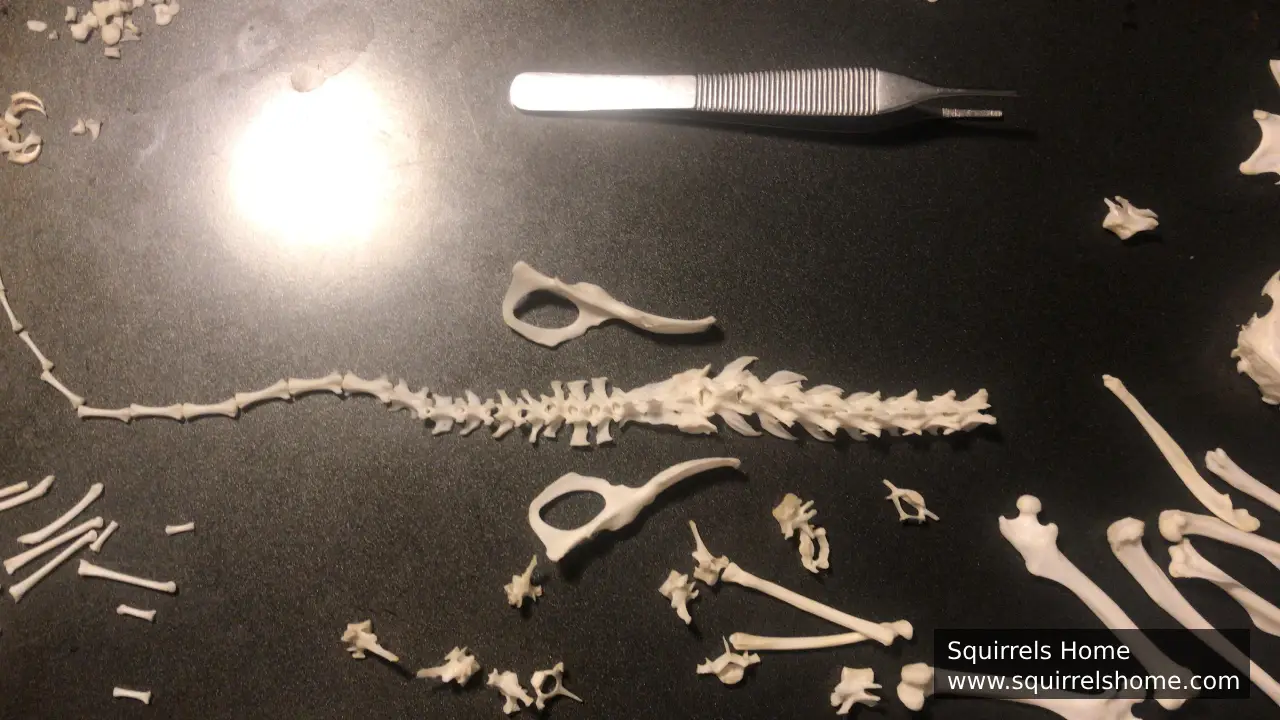The spine of a squirrel is an amazing structure that helps this small animal do incredible things. It’s not just a backbone but a highly flexible and strong system. This spine supports their daily activities, like climbing trees, jumping, and balancing on thin branches. Let’s explore what makes it so special.
How the Spine Helps Squirrels Move
The spine of a squirrel is highly flexible. This flexibility allows them to move in ways that many other animals can’t. For example, squirrels can twist their bodies in mid-air when they jump from one tree to another. This ability is possible because of their unique spinal structure.
Each part of the spine works together to give them this movement. Squirrels’ spines are made up of many small bones called vertebrae. These bones are connected by soft tissues, which act like springs. These springs let the squirrel bend, twist, and stretch with ease. This feature is especially useful when climbing trees or escaping predators.
The Tail and Its Connection to the Spine
Squirrels’ tails are not just for decoration. The tail is an extension of the spine, and it plays a big role in their balance and movement. When a squirrel jumps, its tail helps to steer and stabilize it. This is very important for landing safely on thin branches.
The tail also helps when squirrels run across uneven surfaces. By shifting their tail, they can adjust their balance quickly. This prevents them from falling. In the winter, squirrels even use their tails as blankets, thanks to the flexible connection to their spine.
Adaptability of the Squirrel Spine
The squirrel’s spine is also very adaptable. This means it can handle different types of movements and environments. For example, squirrels can climb straight up tree trunks or hang upside down from branches. Their spines let them bend in extreme ways without getting hurt.
This adaptability is possible because the vertebrae in their spine are strong yet lightweight. The muscles around the spine are also well-developed, giving squirrels both strength and flexibility. These features make their spine one of the most efficient in the animal world.
How the Spine Supports Jumps
Squirrels are known for their amazing jumping skills. They can leap several times their body length. Their spines help store and release energy during these jumps. When a squirrel prepares to jump, its spine curves like a spring. As it jumps, the spine straightens, releasing the stored energy and propelling the squirrel forward.
This ability is crucial for escaping predators or moving between trees. Without such a powerful and flexible spine, squirrels wouldn’t be able to survive in their natural habitats.
Unique Features in Squirrels’ Vertebrae
The vertebrae of a squirrel’s spine are different from many other animals. For one, they are smaller and lighter, which helps with agility. Despite their size, these vertebrae are very strong. This strength helps squirrels handle high-impact landings after jumps.
Another unique feature is the spacing between the vertebrae. This spacing allows for greater flexibility and prevents the bones from rubbing against each other. This design reduces the risk of injury and makes their spine highly durable.
How the Spine Helps in Communication
You might not think of the spine as being important for communication, but in squirrels, it is. Squirrels use their tails, which are connected to their spines, to send signals. For example, they might flick their tails to warn others about danger.
This movement is made possible by the spine’s flexibility. The muscles connected to the spine allow precise control of the tail. This makes their communication system both effective and fascinating.
Conclusion
The spine of a squirrel is an incredible example of nature’s engineering. It gives them flexibility, strength, and adaptability. These features help them climb trees, jump long distances, and balance on narrow branches. Their spine even plays a role in communication through tail movements. Without their unique spines, squirrels wouldn’t be the agile and active creatures we know.
FAQs
1. How does a squirrel’s spine compare to other animals?
A squirrel’s spine is more flexible and lightweight than many other animals. This allows them to move in unique ways, like twisting mid-air or hanging upside down.
2. Can a squirrel’s spine get injured?
Yes, like all animals, squirrels can injure their spines. However, their strong and flexible design helps prevent injuries during everyday activities like jumping or climbing.
3. Do all squirrels have the same type of spine?
While all squirrels share similar spinal features, there can be small differences depending on the species. For example, flying squirrels have adaptations for gliding that are slightly different.
4. How does the spine help squirrels survive predators?
The spine allows squirrels to move quickly and flexibly, helping them escape predators. They can twist, turn, and jump with precision, making it hard for predators to catch them.
5. Why is the tail so important to squirrels?
The tail, connected to the spine, helps with balance, communication, and even warmth. It’s a multifunctional tool that plays a big role in a squirrel’s life.
